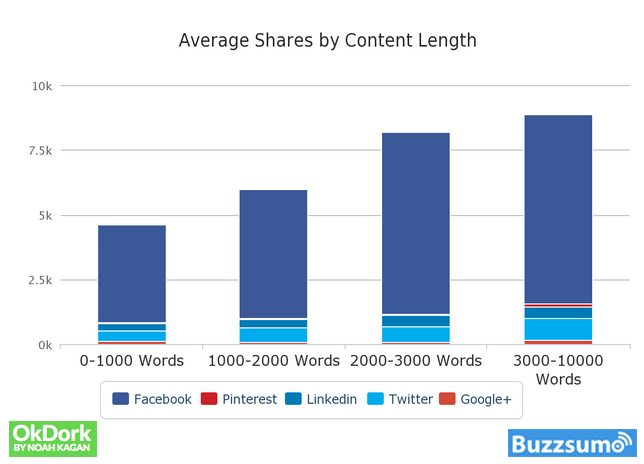Wow! Time sure flies. The past 2 months I have been blogging Every Single Day. This was an experiment to not only see the effects of blogging on our business, but also to embark on an educational adventure. Change obviously isn’t instantaneous, but my new attention to the business and writing blogs certainly had unforeseen outcomes.
In this blog post I’ll be reviewing some of the trials and tribulations as well as things I’ve learned, real results, and where we go from here.
Setting the stage:
In 2017, I wanted to take a more purposeful interest in our own digital marketing. So many of our clients are through relationships we’ve built offline, that as a digital marketing agency, I knew at some point we needed to start walking the walk. We’ve been cruising along with a 6 figure business managing marketing efforts and doing web design for small businesses, but our own online presence has always been more of an afterthought.
After years full of competing commitments and lifestyle changes, 2017 became the clear year that I needed to attention on the business to really get it to the next level! In 2015 I graduated with honor from the Leeds School of Business after getting my MBA while working and running BIMS full time. Then in 2016 we welcomed our gorgeous (and tough) little girl to the world. I was back to jumping on conference calls while breastfeeding within days (probably more like hours) of bringing her home. Though I cut back face to face meetings, I continued to run a networking group and somehow managed to juggle a transition to motherhood as a business owner as we went into our most profitable year in business. However, throughout this time, I knew there had to be an easier way to do business. I love working with clients face to face, but sitting as the face of the business certainly has its pitfalls as you can never really step away.
My goal for 2017 is to set the systems in place to redirect our business to less hands on work and more digital assets. Blogging for 60 days straight was meant as a launch pad to refocus attention on the business, our email lists, and ultimately launch a program that could be repeated over and over again. Surprisingly, besides blogs for clients, I had never actually written a post for our site as we always have had interns and contractors writing for us.
Not sure quite what to talk about, I followed the advice we give to our clients and created a content plan utilizing Trello as an organizational guide. Before technically starting the 60 Blogs in 60 Days challenge, I was off to a good start with a weeks worth of posts ready as drafts in Trello. About 30 other topics were listed with notes and bullets to make the writing of the content a little easier. Then I jumped in!
Getting Started with Blogging:
It was exhilarating writing the blogs and publishing them on the site. Not one to really share personal information on my own social networks, I set up tools to automatically post the blogs including:
- Zapier: On Zapier I create 3 Zaps. Two Zaps automatically posted the featured image to Pinterest (on 2 different boards) and the third was actually to automatically post our business Instagram images to Pinterest.
- SNAP (Social Networks Auto Poster) Plugin: This plugin is great for WordPress. It automatically links your blog with Delicious, Medium, LinkedIn, Facebook and other networks so each blog post is published or back linked elsewhere. Though I never quite got the settings figured out for LinkedIn and the Medium SNAP became disconnected, I theoretically had the blogs going out to a handful of networks without needing to do anything else on my end.
Finding time to write the blog posts got more difficult, but at the start of the 60 day challenge, I often used Voice to Text while walking our dog. Unfortunately, Mary Kathryn started wanting to walk during our walks rather than just hanging out in the stroller. Once this started, I decided not to multitask and just focused on playing with the girls on our walks. That’s when evening blog writing started and I’d carve out time after dinner to write the blogs hoping I wouldn’t need to finish them during the sacred morning nap time (or as I like to call it, the most productive part of the day).
Initial Results from Blogging:
The initial results from daily blogging were fantastic! Within weeks we had seen an increase in traffic to the site. Now keep in mind, like a lot of business websites, our site was really just a brochure for our business should someone we met in person want to read about our services. It was really built as an afterthought, rather than designed to fulfill a specific purpose.
We were pretty pleased with the initial traction we were getting from the blogs and actually sharing the blog posts to our social media networks online. To track this, I ran a Google Analytics report comparing the date range of 4/2-4/22 to the previous period. From here, I pulled the reports for Acquisition > Traffic > Source/Medium and Behavior > All Pages to see where people were coming from and what pages they were visiting on our site.
Traffic to BIMSTeam.com has INCREASED 117.65%!


Pageviews on BIMSTeam.com has INCREASED 83.02%!

An increase in traffic of 117.65% certainly was exciting even though our traffic numbers are still relatively small for a 6 year old business making 6 figures. This increase had to be a good sign, right? The only problem was that the site wasn’t set up to capture emails and leads. Once someone landed on a blog, that was that. We didn’t have any freebies or downloads. Recognizing this, my schedule of blogging once per day because a little more challenging.
I now recognized that we needed these additional resources as a way to actually capture the leads and again walk the walk of the advice we always give to clients. Traffic to the site is great, but you need to make sure you are being purposeful about what you then DO with those individuals.
Competing Priorities:
I haven’t mentioned this yet, but when I launched the 60 Blogs in 60 Days, I also signed up for ConvertKit as a way to provide daily emails to other individuals who wanted to commit to 60 Blogs in 60 Days. The one problem was that the day I first posted the landing page to some Facebook Groups, I immediately got 20 signups in a day. Great right!? Not for me. As I wrote the blogs, I also needed to make sure I wrote the corresponding daily email to be sent to subscribers. These emails include tips, blog topics, motivational quotes, and how to’s for SEO, sharing your content, writing headlines, and so much more. At times I was able to turn the email into a blog post, but often it came down to basically writing 2 blogs Every Single Day.
I urge you to sign up for the 60 Blogs in 60 Days Challenge if you want to read all these tips 🙂

So what did this mean… Well, basically from the beginning I had competing priorities. I wanted to fulfill the challenge myself, but I also had a commitment to the individuals who had registered for the challenge. To date, the landing page for the challenge has a 34% conversion rate – not too bad, ehh?! It was the first landing page I created with ConvertKit, so looking at it now, I would probably adjust the page and content some, but at 34% visitor to lead sign up rate, I may just keep it as is and test a second design if I decide to keep pushing the program.
As I also mentioned, I realized a few weeks in how important it was going to be to offer resources and freebies for site visitors as a way to grow our email list. This resulted in me continuing to write the blogs every day, but slowly nearly falling behind as I also was creating guides, ebooks, and a digital course.
About 3 years ago or so, I remember stumbling upon the Nectar Creative and loving the resources Melyssa Griffin offered. It seemed really unique to have one signup and then access to her full collection of downloads. Of course she’s now one of the business owners you want to emulate and has done an incredible job growing her business. But, when I first saw her resource library, I set out to recreate all of the resources. Getting caught up in business school, growing a family, and managing every day business operations, I never actually created a single download.
Knowing that the best time to plant a tree was 20 years ago, the second best time is today, I jumped in and got started. There is only so much you can do by kicking yourself for not acting on something years ago, but life is about prioritizing, right? For the past few years, my priorities weren’t growing the BIMS Team’s online presence. Now, at last, it is!
SO, in addition to the daily blogs and daily emails, I now set out to create resources. As you work on projects like this, it can be difficult to stay committed and focused. Though I’ve always tried to be really good about not multitasking, I began to feel like my head was spinning and I would start jumping from project to project while trying to also finish up web design projects, on-boarding new clients, and fulfilling client obligations.
With hundreds of browser windows open, I began scrambling to balance the time I spent educating myself, committing to furthering BIMS, and working with clients. Above this, most days I also had Mary Kathryn by my side. Time management and prioritizing, one my dear friend, became a distant memory. So much for following tactics laid out in the Four Hour Workweek or discussed by Todd Herman. In the span of one month, I went from one neatly organized notebook to a cluttered desk and three notebooks each with meeting notes and to do lists from every day. I’m so excited as a am moving back towards normalcy as it comes to my time management and prioritization of tasks.
Did I mention that at this same time my husband left his job to focus on building his freelance business? At least I now have more consistent help with the girls 🙂
Actual Results from 60 Blogs in 60 Days:
Beyond slowing picking myself up from complete disarray, a lot has been accomplished in the past 60 days! Actually, even more than I imagined has been pulled together. Granted, some of the blog posts were god-awful and never edited and I think some may have been published without actually being completed, I did fulfill my goal of posting a blog every single day for 60 (actually 64) days.
But above and beyond that, through emphasizing a commitment to my business, I’ve begun creating some REALLY great resources for business owners, people just starting out, and bloggers.
Some examples include:
- This Website Planning Guide: A free workbook that covers the steps you need to take before you start designing and developing your own website. It includes prompts for your brand values, fonts, and colors, as well as a step by step guide for writing you About, Services, and Product pages. My goal is for this to turn into a Website in a Weekend Program for those Do it yourself-ers who want to make sure they are building their site the right way without spending thousands for a web designer to build a site for you when you don’t have the money coming in the door.
- Blogging Your Business: This course was built mostly using content from webinars we ran last year, but also provides the exact template we use to build an editorial calendar, broken down to daily posts, for our clients. It is a go-to resource to understand how blogging can be useful for your business as an avenue to propel growth to the next level.
- Blogging 101: This is a easy to implement guide for outlining your blogs and best practices for SEO. It is a great tool for those who just need a little extra help outlining their blog topics. [Sign up form is below].
The process of writing a blog every day allowed me to explore certain topics in much more depth than I ever had in the past. It created an avenue for me to actually set aside time to begin creating resources and to focus on the digital marketing for The BIMS Team.
We’ve always gotten clients through RFP’s or word of mouth and networking, so a lot of changes needed to take place on my personal accounts specifically and some of the layout of the website. These website changes are almost complete, but prior to a month ago, we had no forms or calls to action.
Additionally, as you can expect, website traffic increased as did email sign ups! We currently have 928 active email subscribers, of which 100 are new from the various calls to action and content upgrades on the site!
Where to from here:
While I wish I could continue blogging every day, the posts with the highest engagement and most traffic were, as you can guess, the longer blog posts. These posts I never wrote in one sitting and very clearly show cased more information than the shorter and sometimes poorly written posts.
My game plan after this is to:
- Write 1 blog post per week that comes in at 1,500 + words
- Write 1 blog post per month that is 5,000 words
- Create 1 video per week or audio to complement the blog post
- Focus on building Pinterest with more of a game-plan
- Continue creating, updating, and optimizing the Content Upgrades or Free Resources on our site
- Turn my attention on continuing to grow our email list
- Update the Blogging Your Business course to include even more actionable advice
You can follow the progress and receive free tips, tutorials, and advice on our email list here.
Hopefully this overview of my experience with blogging 60 days straight was informative for you and provided advice and guidance that you can bring with you as you create your own blog and digital marketing plan!


























